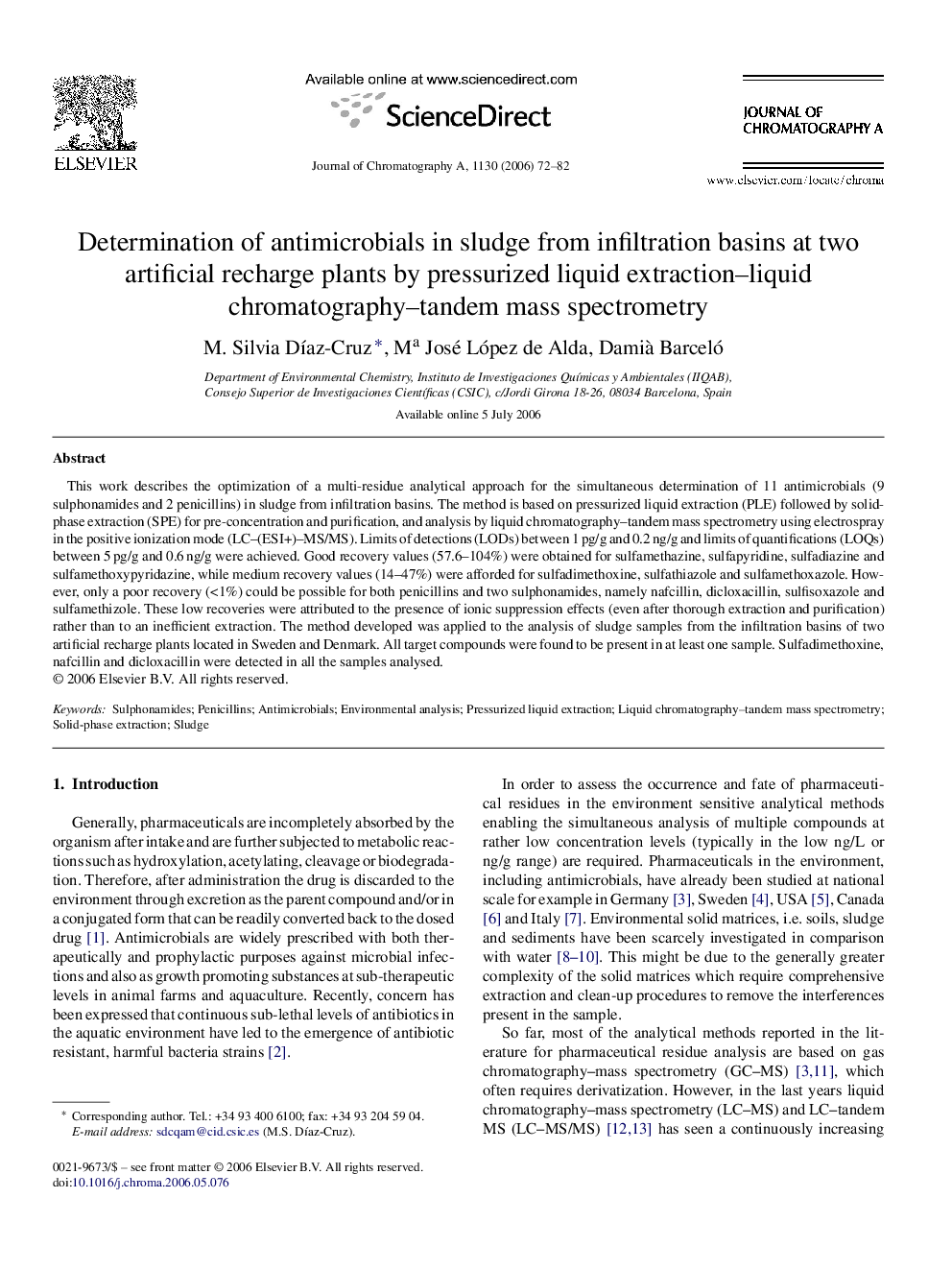| کد مقاله | کد نشریه | سال انتشار | مقاله انگلیسی | نسخه تمام متن |
|---|---|---|---|---|
| 1208494 | 965307 | 2006 | 11 صفحه PDF | دانلود رایگان |

This work describes the optimization of a multi-residue analytical approach for the simultaneous determination of 11 antimicrobials (9 sulphonamides and 2 penicillins) in sludge from infiltration basins. The method is based on pressurized liquid extraction (PLE) followed by solid-phase extraction (SPE) for pre-concentration and purification, and analysis by liquid chromatography–tandem mass spectrometry using electrospray in the positive ionization mode (LC–(ESI+)–MS/MS). Limits of detections (LODs) between 1 pg/g and 0.2 ng/g and limits of quantifications (LOQs) between 5 pg/g and 0.6 ng/g were achieved. Good recovery values (57.6–104%) were obtained for sulfamethazine, sulfapyridine, sulfadiazine and sulfamethoxypyridazine, while medium recovery values (14–47%) were afforded for sulfadimethoxine, sulfathiazole and sulfamethoxazole. However, only a poor recovery (<1%) could be possible for both penicillins and two sulphonamides, namely nafcillin, dicloxacillin, sulfisoxazole and sulfamethizole. These low recoveries were attributed to the presence of ionic suppression effects (even after thorough extraction and purification) rather than to an inefficient extraction. The method developed was applied to the analysis of sludge samples from the infiltration basins of two artificial recharge plants located in Sweden and Denmark. All target compounds were found to be present in at least one sample. Sulfadimethoxine, nafcillin and dicloxacillin were detected in all the samples analysed.
Journal: Journal of Chromatography A - Volume 1130, Issue 1, 13 October 2006, Pages 72–82